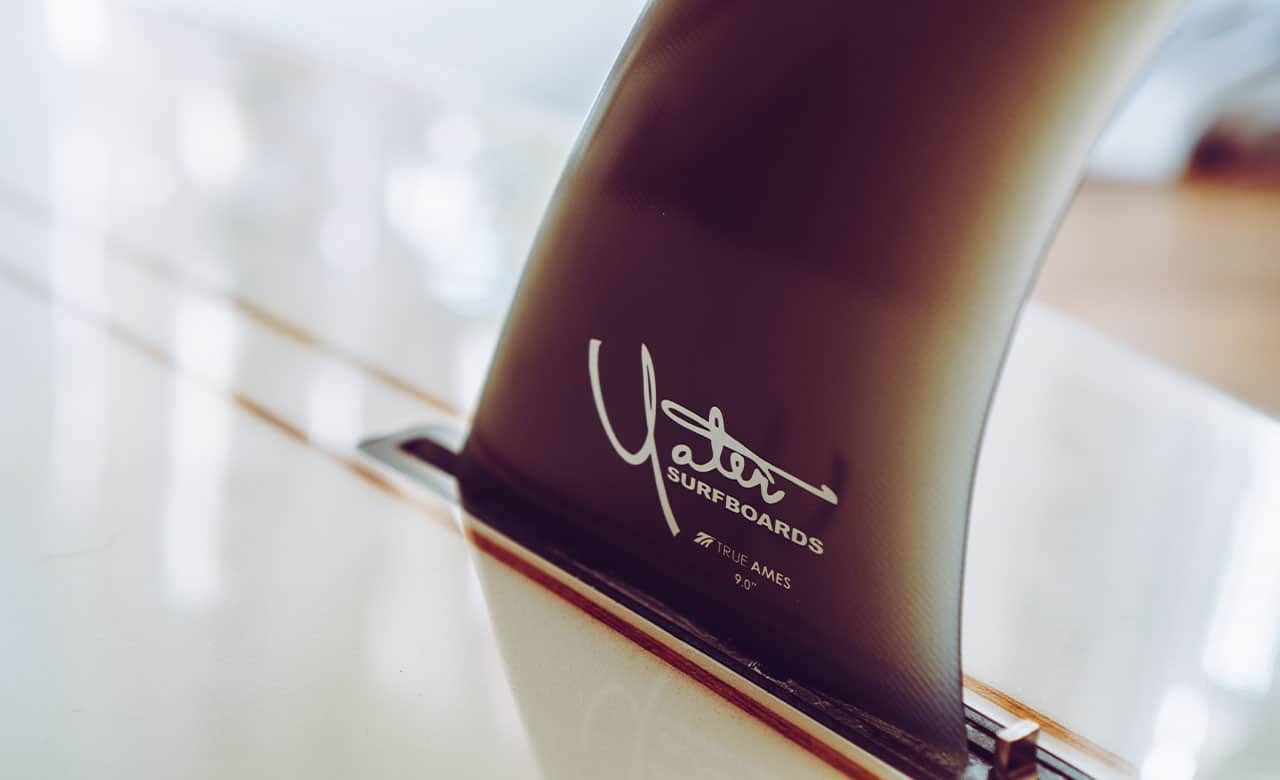Surfboard Fin Set-Ups
When many of us grew up, fins were glassed onto the surfboards, and when they were damaged, they had to be replaced and glassed back on. Unfortunately, this often led to fins being out of alignment and making strange whistling sounds.
Then people started discovering the joys of different fin set-ups. This was initiated by Mark Richard’s dominance with twin fins and then Simon Anderson’s remarkable three-fin Thruster discovery, and everything changed.
Whats unique about The Different Fin Set-Ups?
Single Fin
The world started surfing on single fins, and the one surfer who continued to claim singles and surf on them his whole life was Australian Cheyne Horan. It was a pity, as these fins are stable but very undynamic. In popular thought, Cheyne would have won a world title on a regular twin fin or thruster at the time.
The single fin set-up provides a smooth style that’s visually appealing. Nowadays, it is most common to find this type of fin set-up on a longboard, meant for surfing mellow waves.
Twin Fin
The twin fin set-up was made famous by Australian surfer Mark Richards from Newcastle. He went on to win four world titles on them, breaking away from the single fin ideology.
Two equal-sized fins are placed on either side of the tail, thus splitting the single fin into two. This allowed for more speed, slide, and extreme
maneuverability.
Thruster Fin Set-Up
When Simon Anderson put the third fin onto a twin fin in 1981, it was a game-changer as the ‘Thruster’ came into being. Simon went on to win several events that year on his Thruster – a board that seemed to give unbelievable power and speed. It also allowed Simon control in the barrel and confidence to pull off big power moves.
The three-fin thruster is still the most common set-up today. Most professionel surfers on the championship tour will either ride a Thruster or a quad set-up.
Quad Fin
The quad fin set-up comes in and out of fashion, depending on who is riding them. Kelly Slater has championed the quad many times to great results. These days the big wave crew generally all surf on quad set-ups to enable more fin area in the water than any other set-up. This allows for extra hold and stability in large surf. The quad fin design can also be utilized effectively to garner unbelievable speed in weak conditions in small waves.
5-Fin Set-Up
While the 5-fin design has merits, it is usually a fix to a design that needs tweaking. For example, when someone has a quad fin set up that needs more stability, then a 5th fin stabilizer can be added for extra stability.
The 5-fin design is excellent, however, for switching between thrusters and quad set-ups.
2+1 Fin Set-Up
The 2+1 is much like the 5 fin set-up when a stabilizer is added to a twin set-up to add stability and prevent sliding.
How to pick the best fin set-up for your surfboard?
If you are new to surfing, it can be quite challenging to pick the correct fin set-up, but your choice of fins should always be based on conditions and your surfboard.
Knowing the different types of fin set-ups and their benefits is key to making the right decision. The correct fin set-up for your conditions is one of the most essential selective processes you must undergo.
For example, big waves need bigger fins, and massive waves need more fin area in the water (quads). Similarly, the bigger you are and the more you weigh, the bigger the fins you’ll need, as you will simply overpower small fins. On the other hand, surfing mellow waves on a longboard, often calls for a single- or twin fin setup, as speed and stability are less significant and style becomes your main priority.
The most commonly used fin set-ups are the thruster and quad fin setup, hence why you will find them on everything from beginner softboards to shortboards used by professional surfers.
Function Of The Surfboard Fin Set-Up
There are many different elements in the fin set-up. The size of the fin is related to your body weight and to the waves you want to surf in, with larger people needing bigger fins.
The flexibility of fins is essential, with more flexible fins making a board looser but with less drive. Conversely, stiffer fins are more rigid but with incredible drive.
The size of the fin’s base is related to the fin size as well, with a bigger base for bigger fins and bigger surfers or waves.
It is always thought that glassed on fins were faster than removable fins. Still, this difference is negligible, as the best surfers in the world all use removables.
Most Popular Brands to choose from
Surfboard fins are dominated by either Fin Control System (FCS) or Futures.
Within both these brands, there are signature fins from the best surfers in the world. There are also signature fin designs from some of the best shapers and surfboard manufacturers globally, like Channel Islands Surfboards fin range and Al Merrick fins.


